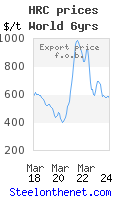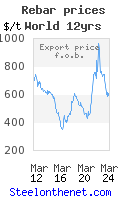Coal mine investigation to look into Sago Mine accident
The Associated Press reports that an investigation is to look into the causes of the recent accident at the Sago Mine.
Investigators will probably look for scorch marks and melted plastic, examine mining equipment for signs of a short-circuit, establish whether the methane gas detectors were working and take air samples to check for combustible coal dust.
They are also likely to take notice of where the bodies lay, track the victims' footprints and perhaps look for farewell notes.
It is federal and state investigators who will most likely go in and begin gathering forensic clues in an effort to establish exactly what touched off the explosion.
At the same time, other investigators will probably search through safety records and interview just about everyone connected with the mine.
The blast on 2nd January killed one miner and spread carbon monoxide that slowly asphyxiated 11 other men some 260 feet below the ground.
"It's the same approach, in that every bit of evidence is very crucial," said Richard Begley, a former mine boss, now an engineering professor at Marshall University, reports the Associated Press [A.P.].
Investigators already have some clues, including a sort of timeline written by one of the trapped miners, and a place to start: Rescue workers discovered that all of the seals on a closed-off section of the mine had been blown toward the surface, indicating that was where the explosion took place.
"With an explosion you want to know where and how it was initiated," said Terry Farley, a member of the state investigative team reports A.P. "We want to know how the fuel came to be, the buildup of gases, how that came about. That's not uncommon in a sealed area."
To pinpoint the cause, the investigation team - which typically includes engineers, mine safety supervisors and mine ventilation experts - will most likely look for charring and other burn patterns, said Chris Hamilton, a former mine foreman and mine rescue instructor who is now the senior vice president of the West Virginia Coal Association. And they will want to ask miners who escaped to describe conditions in the mine just before the explosion, he said.
Tests conducted during the rescue detected high levels of carbon monoxide, and rescue workers found little evidence of fire. That suggests the explosion was probably caused by methane alone, and not, say, coal dust stirred up by the miners, Begley said.
Past investigations by the federal Mine Safety and Health Administration looked at whether methane detectors were working, and studied barometric pressure readings around the time of the accident, said Ellen Smith, editor of the newsletter Mine Safety and Health News. Such changes in pressure can release the odorless, colorless gas from the earth...
For full A.P. report, see http://www.gainesville.com/apps/pbcs.dll/article?AID=/20060114/WIRE/201140336/1117/news.
blogger@steelonthenet.com
Investigators will probably look for scorch marks and melted plastic, examine mining equipment for signs of a short-circuit, establish whether the methane gas detectors were working and take air samples to check for combustible coal dust.
They are also likely to take notice of where the bodies lay, track the victims' footprints and perhaps look for farewell notes.
It is federal and state investigators who will most likely go in and begin gathering forensic clues in an effort to establish exactly what touched off the explosion.
At the same time, other investigators will probably search through safety records and interview just about everyone connected with the mine.
The blast on 2nd January killed one miner and spread carbon monoxide that slowly asphyxiated 11 other men some 260 feet below the ground.
"It's the same approach, in that every bit of evidence is very crucial," said Richard Begley, a former mine boss, now an engineering professor at Marshall University, reports the Associated Press [A.P.].
Investigators already have some clues, including a sort of timeline written by one of the trapped miners, and a place to start: Rescue workers discovered that all of the seals on a closed-off section of the mine had been blown toward the surface, indicating that was where the explosion took place.
"With an explosion you want to know where and how it was initiated," said Terry Farley, a member of the state investigative team reports A.P. "We want to know how the fuel came to be, the buildup of gases, how that came about. That's not uncommon in a sealed area."
To pinpoint the cause, the investigation team - which typically includes engineers, mine safety supervisors and mine ventilation experts - will most likely look for charring and other burn patterns, said Chris Hamilton, a former mine foreman and mine rescue instructor who is now the senior vice president of the West Virginia Coal Association. And they will want to ask miners who escaped to describe conditions in the mine just before the explosion, he said.
Tests conducted during the rescue detected high levels of carbon monoxide, and rescue workers found little evidence of fire. That suggests the explosion was probably caused by methane alone, and not, say, coal dust stirred up by the miners, Begley said.
Past investigations by the federal Mine Safety and Health Administration looked at whether methane detectors were working, and studied barometric pressure readings around the time of the accident, said Ellen Smith, editor of the newsletter Mine Safety and Health News. Such changes in pressure can release the odorless, colorless gas from the earth...
For full A.P. report, see http://www.gainesville.com/apps/pbcs.dll/article?AID=/20060114/WIRE/201140336/1117/news.
blogger@steelonthenet.com




0 Comments:
Post a Comment
<< Home